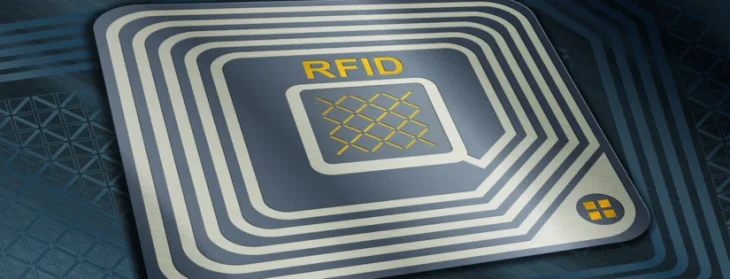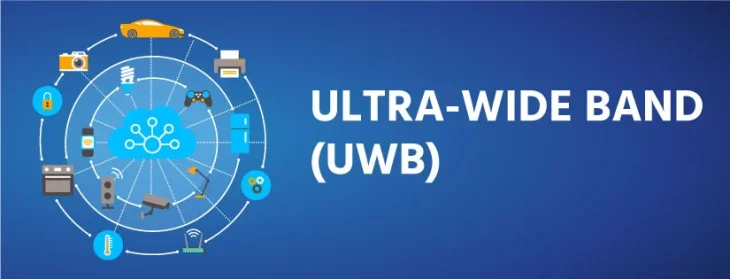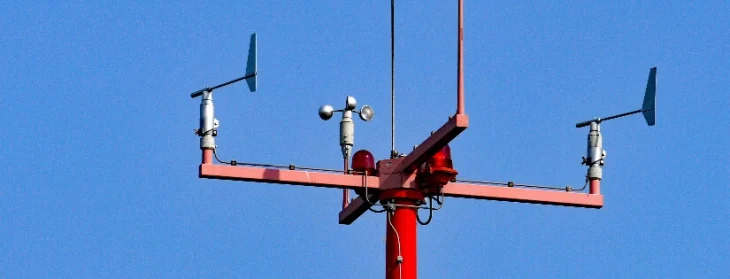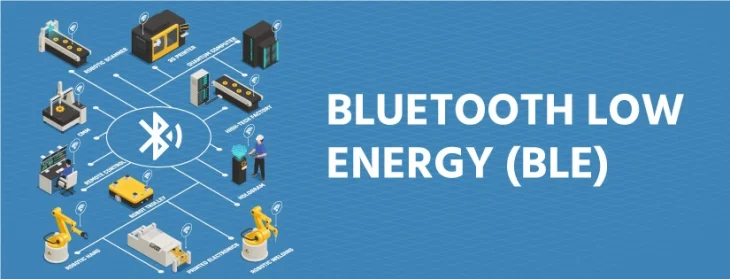Computer vision and Robots
Robots, one of technology’s most bizarre and unique gifts to humanity. Popular culture has created vivid depictions of robots. However, real-life begs to differ. Robotics has been in use for a decade. From law enforcement to the medical stream, robotics has witnessed increasing usage. Robotics has also found its position in the industrial automation sector, although sometimes they are not always referred to as robots. With the continued advancements in technology, the new generation of robots are making their presence felt, and they are specialized in multitasking. But how would a multitasking robot identify objects? Well, computer vision is doing the job in this regard. Computer vision technology enables robots to see what’s around them, identify, and make decisions. Computer vision, which is often called as machine vision in robotics, operates via smart cameras mounted on these robots. These intelligent cameras move as per a robot’s movement and capture surrounding visuals. Deep learning techniques aid robots to interpret these visuals, thereby increasing a robot’s learning curve. The robots have an intricate system embedded within, which identifies and analyzes the captured visuals and create objectives for the next possible step. Some robots have humanoid features. Sophia, the headline grabbing realistic humanoid robot made by Hanson Robotics, can imitate humans to such an extent that many tabloids called Sophia to be alive. Intriguing and intimidating at the same time. Nowadays, robots are used in a variety of industries doing vivid tasks. They come in a unique and wide range of sizes and shapes, from task-oriented machines to the more interesting humanoid ones. A robot’s mechanical design may vary from having multiple arms to their modes of navigation. A great example is the spy robots used by intelligence establishments, which are not bigger than a fly. Such a difference in their sizes and shapes depending upon their specific tasks. Computer vision in Robots Most of the robots have one aspect as the common factor, which is computer vision. Computer vision-based robots use a variety of smart cameras, such as the LIDAR scanners, RGB cameras, IR cameras, depth cameras, etc. Computer vision technology is something that processes visuals such as images and video feeds using deep learning algorithms and generates the next course of action. When coupled with smart cameras and sensors, computer vision views captures and recognizes similar patterns in the incoming feeds. Many robots come with inbuilt memory chips, which act as repositories, while others have their backend system plugged into the central server. It is to note that computer vision has already been present in a wide array of industrial processes, such as pattern recognition, electronic component analysis, object inspection, and recognition. Such an intelligent vision system is also used for barcode recognition, signatures recognition, recognition of optical characters, and currency. Robot’s Anatomy The primary setup of a robot’s vision system includes necessary items, like a camera or a camera recorder that captures a picture or records a clip, an inbuilt machine vision system to guide a robot’s mechanism, and the required algorithms to generate a result. For a machine vision-enabled robotic system to operate smoothly and produce precise results, it is significant to make sure that these essential components interact in a way as required. Let us take a short walk through the operation of a machine vision system in robots: Regarding identifying colors, the robot’s vision system is classified into three prime groups depending on the object’s color: The system creates a digital image using pixels divided into the classes mentioned above. In case an image doesn’t conform to these classes, then the class similar to the image is selected Rise of industrial robots The rise of industrial robots has acted as a catalyst to boost up production efficiency. Computer vision-based robots are slowly abolishing time-consuming tasks in pre-production checks such as mechanical changes, system calibration, test runs, etc. Although production workers mostly carry out such tasks, robots are indeed making their presence felt. In case you are looking for a robot, make sure you have the right understanding of a robot’s control program. The machine vision system should be compatible with the control program of the robot. The configuration needs to be smooth without much hiccups and extra time. The motive of introducing machine vision guided robots is to enhance productivity while reducing costs. Even with a consistent system, setting up may require a lot of time and labor. In case a system is asking for extra time and work, reassess the configuration. A robot is sightless without a proper vision guided system, for it needs the same system to identify and carry out designated tasks. For minimal jobs, there are computer vision-based robots that come with predesignated settings such as pick and place. Tasks such as individual boxing can be automated by computer vision for identifying position and orientation. Nowadays, there are machine vision guided robots where the system identifies positioning parts of the object and position information to the robot, which can carry out “picking” while simultaneously inspecting it, without needing any orientation pallet. Law enforcement establishment in some cities around the world has introduced “patrolling robots,” which work on behalf of the police. There are entire production setups with no employees but only robots carrying out operations. The COVID-19 global pandemic has introduced automated vision-based robots in restaurants. With the reduction in software and hardware prices coupled with rapid growth in computer vision technology, it is becoming simple to integrate robotics with such vision systems. The computer vision market in robotics is destined for long-term growth. With more and more applications in a wide range of industries, and with the increasing ease of use, it is understandable that this field will grow exponentially in the future.
Read MoreWhat is Bluetooth Low Energy (BLE) in Intelligent Sensing
There is a difference between Bluetooth Low Energy and Bluetooth. If you’re interested in using BLE technology for beacons, there are a few different components that you should know about. These components all help create beacons that use Bluetooth Low Energy to communicate. This article will explain each component and help you decide whether you need them in your business. Over the last 9 years, Bluetooth low energy enabled devices have gained traction of the IoT market worldwide. The following statistic shows forecast market volume of Bluetooth low energy devices worldwide, from 2013 to 2020. Source: Statista What is Bluetooth Low Energy Bluetooth Low Energy, also known as BLE, is a wireless technology that uses the 2.4 GHz radio band to communicate with other devices. A BLE communicates by broadcasting data. It is a form of unidirectional communication in which two devices communicate without establishing a connection. Peripheral and central devices can use this type of communication for different purposes. Broadcasts are multicast, and a client device can receive them as long as it is nearby. This type of communication is not secure, but it has many applications. This wireless technology uses 40 separate frequency channels separated by two MHz. Three are primary advertisement channels, while the remaining 37 are secondary data channels. Bluetooth communication starts on the primary channels and offloads to the secondary ones. Low-energy Bluetooth is built into most new smartphones and tablets. Android phones and tablets may support BLE or a different version of Bluetooth. Bluetooth Classic devices may not work with BLE. The BLE specification defines a series of attributes called characteristics. These characteristics are similar to object-oriented language’s member variables. Representative characteristics include heart rate and volume. They can be Read-Only or Write-Only. Writing a new value to a characteristic is analogous to invoking a “setter” in an object-oriented language. Characteristic descriptors provide more information about the characteristics. These attributes are used to store information about the device. Difference between BLE and Bluetooth There are several differences between Bluetooth Low Energy and its older cousin, Bluetooth. Bluetooth Low Energy is based on a series of layers, including the Generic Attribute Profile (GATT), the Link Layer, and the Generic Access Profile (GAP). Each layer has different responsibilities and a particular method of communication, and a BLE device can implement more than one profile at once. While “classic” Bluetooth is intended for consumers, Bluetooth Low Energy is aimed at the industrial sector. It is designed to report small amounts of information in a short period. Because BLE uses less power, it has a lower acquisition cost and can be deployed more quickly. It also enables devices to operate for more extended periods before recharging. In addition to a lower acquisition cost, BLE devices can transmit more information over a wider area than Bluetooth. The underlying technology behind Bluetooth low energy is a highly versatile wireless communication standard. It can communicate with many different interfaces and devices. Bluetooth standard requires a high battery capacity, and frequent recharges, whereas Bluetooth low-energy devices can run for years on a small battery. Bluetooth low energy is also very fast at transferring complex data. It means it will be easier for businesses to implement low-power applications and increase productivity. Another difference between BLE and Bluetooth is the number of channels they use for communication. Standard Bluetooth uses a fixed channel, and BLE uses 40 two-MHz channels. BLE uses a gaussian frequency shift modulation (GFSM) to smooth out data pulses and reduce interference. A direct sequence spread spectrum is also used to minimize interference among BLE devices. This feature is available in most smartphones, tablets, and other smart devices. How does BLE work It has two main layers – a physical layer and a link layer. The physical layer communicates with the other devices, while the link layer is responsible for encoding and decoding data. Bluetooth Low Energy devices also use the L2CAP protocol to ensure communication security. When Bluetooth connects two devices, a connection event is initiated. This event enables the devices to exchange user data. These packets are sent out at a fixed interval called Connection Interval. The two devices exchange data at every connection event. Each device transmits data once in a while and can communicate with each other over several channels. The devices use 37 channels for data and three channels for advertisement. BLE uses a General Attribute Profile (GATT) to communicate over a Bluetooth link. This GATT profile is the basis for most current BLE application profiles. You can use several other profiles defined by the Bluetooth SIG, and your device can implement as many as it supports. Once it helps the GATT profile, it can communicate with other BLE devices. Bluetooth low-energy beacons Bluetooth low energy beacons are devices that operate on Bluetooth low energy principle. They are like machine emitters that constantly emit radio signals over short, regular intervals for other devices to receive. The information transmitted is in the form of letters and numbers. BLW beacons consist of a CPU, lithium-ion batteries, and a radio. They contain a unique ID transmitted to the receiving device, which then forwards it to a designated cloud server to retrieve information in that beacon. Different beacon applications have additional coexistence requirements. Some may only require centimeter-scale ranges, while others require multiple hundreds of meters. The Bluetooth low energy core specification allows for a maximum of 10 dBm, so you may need to experiment with your beacons to determine which ranges are best for your application. You may also need to consider how many beacons you must operate simultaneously. One of the primary uses of beacons is in advertising, and the technology is already widely used for advertising. Advertisements can promote products and services, and beacons can run on a coin-cell battery for years. Depending on their usage, beacons can transmit both static and dynamic data. These beacons are easy to install and use. Typically, they can run for years on a single coin-cell battery. The technology that
Read MoreHow GPS tracking helps manufacturers boost ROI
GPS tracking has many benefits, helping organizations curb costly behavior such as vehicle theft and unauthorized use. It can also help them maximize the health of their fleet, saving money on emergency repairs, rental, and replacement costs. Using this technology to optimize vehicle health can help manufacturers increase ROI by reducing maintenance and emergency repair expenses. Cost of GPS tracking With a good GPS tracking solution, you can easily monitor the movements of your company’s field service personnel. It will allow you to improve route management and reduce travel time, thus reducing fuel consumption. With accurate tracking, you can see how much each employee is consuming every day and where they are spending their time. Another advantage is that this type of tracking system can save you money. If your vehicles are stolen, GPS tracking can help you recover them. It can save you thousands of dollars. It can also improve customer satisfaction, which can lead to more revenue. When you have satisfied customers, you’ll be more likely to show up on time and maintain a positive reputation. While GPS tracking costs money, it’s worth it in the long run. Using the technology will allow you to boost ROI by reducing fuel costs and eliminating unsafe driving. Moreover, it will help you dispatch jobs faster and plan efficient routes. With these features, the cost of GPS tracking can help manufacturers increase their ROI by 150 percent or more. As fuel prices continue to rise, manufacturers must find a way to cut down on their fuel expenses. GPS tracking can help them do that by reducing fuel consumption. Fuel costs are a considerable expense; even the smallest reduction can significantly affect your bottom line. And with a GPS tracking system, you’ll be able to find out exactly how much you could save every year by implementing the program. Another great benefit of GPS tracking is the increase in customer satisfaction. It provides information about the exact movements of the tracked assets and can eliminate unsafe driving behaviors. Having this kind of information allows you to reduce your overhead and improve customer service. With a better ROI, you’ll be able to deliver your products faster and retain more customers. Benefits of GPS tracking GPS tracking helps manufacturers improve their operations and decrease their costs. It allows for real-time data access and can help identify problems faster, thus saving the organization money. Companies also benefit from digitalizing processes such as job dispatch and pre-trip inspections. The technology also helps businesses improve fuel efficiency, reducing their overall gas bills. GPS tracking is especially useful in the construction industry. In this field, managing resources and equipment is a complex process. GPS technology helps to simplify the management process and make it more efficient. Several forward-thinking construction managers already recognize the immediate benefits of GPS tracking in construction. GPS allows them to monitor their fleet easily and know if their drivers are running late. Aside from tracking inventory, GPS tracking also promotes safe work practices. Managers can identify drivers who are driving dangerously by providing insight into specific movements of tracked assets. Additionally, companies can increase their productivity and customer satisfaction by accurately monitoring goods. They can also improve their responsiveness to customers in case of delays. And they can also improve employee productivity by calculating an estimated time for delivery. With GPS tracking, manufacturers can monitor their fleets and understand what is happening with the vehicles. It can reduce theft and revenue leakage. And it can also create a digital maintenance program, which alerts the driver about scheduled maintenance. It can significantly improve fleet availability, as well as increase customer satisfaction. GPS tracking for delivery vehicles can reduce theft of goods. It detects theft when vehicles enter or leave the company’s premises and can alert its personnel to prevent theft. In addition, GPS tracking for delivery vehicles can help improve delivery efficiency. It can also help reduce delivery costs. Cost of GPS tracking integration system If you want to use GPS tracking to track your vehicles, you can either build your tracking device or find a provider that integrates with other systems. Whether you make your tracking device, you should consider the cost. While it may be less expensive to build it yourself, you will need to hire an IT team or work with other development teams. Additionally, you will need to take an active role in managing the system and developing KPIs. It would help if you involved office administrators and managers in the process. The cost of a GPS tracking integration system varies widely. Off-the-shelf software costs tens of dollars, while more complex systems cost several hundred thousand dollars. In addition, you should consider how long you intend to use the system. The average service agreement lasts anywhere from 12 to 36 months. However, some providers offer month-to-month plans and money-back guarantees. GPS tracking integration systems provide several benefits for manufacturers and fleet managers. They help ensure driver safety, track the health of your fleet and comply with laws and regulations. They also help companies manage their vehicles more efficiently. For example, GPS tracking systems are great for tracking trucks, buses, and boats. You can monitor their whereabouts and perform necessary maintenance. The technology is constantly improving, and business owners can deploy it relatively quickly. Cost of GPS tracking system for fleets Installing a GPS tracking system in fleet vehicles has many benefits, but the cost can be high. This type of tracking can help manufacturers reduce fuel costs and improve safety. Installing a tracking device can also reduce insurance premiums. In addition, it can lower wages and save on gas. Fleet tracking solutions include software and hardware. The hardware used depends on the monitoring of the business needs. Some services offer plug-and-play devices, while others require more advanced installation. Once installed, GPS tracking devices will send updates to the software, which acts as the central hub for information. The increased efficiency and productivity often offset the costs associated with GPS fleet
Read MoreThe need for Video Surveillance – a simpleton’s guide
If you run a business, you must know by now how the safety and security of your business assets are essential. When it comes to this aspect, video surveillance and security cameras play a significant role in the game. Without going inside nuances and technical jargon, let us walk through the simple reasons that make video surveillance and security cameras crucial for a business. Guarantees overall safety It is one factor which everyone agrees upon. No candidate is better to keep an eye on than your video surveillance set up and support intelligent cameras. Without an efficient surveillance setup, a business is 4x likely to be burglarized. It reported that 60% of burglaries are forced entries, and a sound security system will prevent it from happening. Prevents Employee theft and shoplifting. Here are two figures worth pondering over: Your answer to these issues lies in a well-established, meticulous video surveillance system. Helps in preventing scams & frauds Scam and fraudulent claims result in businesses losing up to 5% of their revenue. A common source of fear for any business is getting sued for an accident, harassment, injury, or legal ground. Having effective video surveillance provides businesses smart leverage as this video feeds serve as testimony. Video Surveillance is a likely ally of law enforcement United States small business administration says that one incident of vandalism can amount to a cost of $3,350. Noticeably placed cameras have been proven to deter individuals to groups to commit acts of vandalism. Even if it occurs, the same video feeds go on to help law enforcement in various ways. The installation of video surveillance cameras has directly or indirectly helped society in significant ways. In 2012, a crime was caught live on a Miami causeway by security cameras installed in a nearby mall and helped police see the convict. It inadvertently helps productivity and boosts sales. In terms of productivity, video surveillance is a good ally since business owners can keep an eye on employees, their movements, and professional courtesy. An intelligent surveillance system can also help employers subject their employees to thorough scrutiny. When talking about sales, intelligent video surveillance cameras are of great help in retail stores. They help the management to track customer traffic patterns and adjust inventory & stocking as a result. The same applies to monitoring customer transactions. It is cost-effective and scalable. A video surveillance system is cost-effective since they significantly reduce the need to hire a security personnel team. It is scalable since adding and integrating more smart cameras in an already established system is easy & hassle-free. Assures business compliance. It is good to install a video surveillance system to comply with the respective country’s existing surveillance policies and rights. Brings peace of mind. Who does not value peace of mind and a moment of assurance? Business owners certainly do. A well-equipped and intelligent video surveillance system goes a long way in maintaining an organization’s order and proper functioning. IP remote surveillance provides continuous real-time monitoring 24/7, allowing authorities to keep an eye on any location 24/7. This ensures peace of mind.
Read MoreWhat is RFID and how does RFID tags, RFID readers work
Ever stood in a grocery store queue waiting for your turn before you could pay and get out? Most of us did, and it is a tiresome, irritating task. But soon, these queues could disappear when the bar codes are replaced by smart tags, also known as RFID tags. If you are unfamiliar with Radio Frequency Identification, RFID stands for radio frequency identification. Radio Frequency Identification or RFID is a technology consisting of radio frequency or waves to transfer data and identify objects. In technical terms, RFID employs electromagnetic fields to identify tags attached to objects automatically. An RFID system includes a minute radio transmitter and receiver. An RFID tag, which contains information such as the item’s price or name, can be tracked and stored for future reference. What is RFID Radiofrequency identification uses electromagnetic fields to automatically recognize tags connected to tags. The object, in this case, can range from books in a library to items purchased from the shopping mall or inventory in the warehouse. The application of RFID is not limited to inanimate objects but also living beings such as birds and humans. A radio transmitter and receiver operate together to identify an object and read a tag’s information. Image courtesy – Zina Yonten, Fabacademy How does RFID work The technology behind RFID is based on radio waves and computer chips to transmit information. When you think about RFID, it’s easy to understand its advantages. Like barcodes, RFID uses radio waves to identify items. An RFID system has three main components: an RFID reader, an RFID tag, and a transceiver. The reader, or transceiver, transmits radio waves to activate the tag. The tag, also called a transponder, responds to the radio signals whenever this object is in the reader’s range and transmits information to the reader. If the reader is within range of an RFID tag, it will detect and read the information contained within. RFID technology is quite similar to the one used in a barcode. Although barcode requires the object and the scanner to be in the line of sight, RFID has no such requirements. As long as the object falls in the reader’s range, it can recognize and send the feedback signal back to the reader. What is inside the RFID system The RFID system contains two components, the RFID tags and the RFID reader. Now, these RFID tags come in three formats which are: Active RFID: Active tags come with their antenna coil and power source, namely a battery. High- frequency tags are more sensitive to interference. It can be read from up to several hundred meters away. While active tags are the most common type of tag, they can also be implanted in people. Passive RFID: Passive tags get power from a reader antenna that sends electromagnetic waves to induce a current in the tag antenna. Low-frequency tags use special antennas to enhance signal strength. Passive RFID tags are usually passive because they don’t have their own power source. As passive tags lack power supply, their range is less than the active and semi-passive tags. Passive RFID tags are small, thin, and can be attached to a physical object, such as a piece of clothing. The reader sends the energy to the tag, which then modulates the energy with the information it needs to identify it. Semi-Passive RFID: Semi-Passive tags involve battery-run circuitry and an RFID reader-powered communication channel. Image courtesy – Zina Yonten, Fabacademy The RFID tag could be an active tech, it could be a passive tech, or it could be a semi-passive tech. They come in many sizes and shapes, from as big as a handheld reader to as large as the shopping mall doors. The RFID reader is composed of three components, which are: RF signal generator: It generates a radio wave transmitted using an antenna.RF signal detector: It receives the feedback signal from the tag.RF Microcontroller: It is used to process the information the RFID tag has sent. Image courtesy – Zina Yonten, Fabacademy RFID Tags RFID tags are devices that transmit information to a central database of data. They can be used in various applications, from inventory tracking to data collection to asset tracking. Let us see the basic components inside the RFID tag. The first component inside the RFID tag is the transponder, which receives the radio waves from the reader and sends the feedback signal back to the reader. Since the passive tags lack their own power supply, they depend on the radio waves emitted by the reader. The capacitor stores the energy from radio waves using this rectifier circuit. This energy is used as a supply for the controller and the memory element inside the RFID tag. The RF signal can be tracked as far as the reader has a line of sight. But most systems are designed to have a limited range. Most of the tags being used today are passive tags because they are cheaper than active ones, as they do not require any power source, so they are pretty compact. In the global marketplace, shipments move fast, and port operations must run at maximum efficiency. Manual tracking cannot keep up with the business pace and can become a hassle if disruptions arise. Tags can help inventory management and reduce theft and counting errors. As a result, RFID tags have become an indispensable asset and facility management tool. Working principle in an RFID system RFID Tags The RFID tags operate in three different frequencies – the low-frequency range, the high-frequency range, and the ultra-high frequency range. The low-frequency signals travel a very short distance, so the low-frequency RFID tag range is up to 10 CM. The high-frequency radio waves can travel up to 1 meter, while the ultra-high frequency radio waves can travel much longer, like 10 to 15 meters. The working principle of the RFID tag is based on inductive coupling for low frequency and high- frequency operation. In contrast, in the case of an ultra-high frequency, the working principle is based on electromagnetic coupling. Image courtesy –
Read MoreUltra-Wide Band (UWB): The Wireless Tech Behind Intelligent Sensing
In an increasingly interconnected world, wireless technology has become the backbone of our modern lives. From smartphones to smart homes and the Internet of Things (IoT), we rely on wireless communication for seamless connectivity. Among the many wireless technologies that have emerged, Ultra-Wide Band (UWB) stands out as a revolutionary technology with the potential to transform intelligent sensing applications. In this article, we will delve into the world of UWB, exploring its principles, applications, and the exciting future it promises. Understanding UWB Technology Ultra-wideband, as the name suggests, utilizes an exceptionally wide spectrum of radio frequencies for communication. Unlike traditional wireless technologies like Wi-Fi and Bluetooth, which operate within narrow frequency bands, UWB spreads its signals across an extremely wide range of frequencies. In essence, UWB sends out brief, low-power pulses of radio waves that span a broad spectrum. This unique approach provides several key advantages that make UWB technology ideal for intelligent sensing applications. ● Precise Location Tracking One of the most prominent features of UWB is its ability to provide highly accurate and real-time location tracking. Traditional GPS systems struggle with indoor tracking and can’t offer the precision needed for applications like asset tracking, indoor navigation, and even virtual reality experiences. UWB fills this gap by enabling centimetre-level accuracy in tracking. It achieves this by measuring the time it takes for a UWB signal to travel between two devices with synchronized clocks. The result is a location accuracy that far surpasses other wireless technologies. ● Impulse Radio Technology At the heart of UWB lies its Impulse Radio technology. Instead of continuous transmission like in traditional wireless systems, UWB devices transmit short, nanosecond-duration pulses. These pulses have a very low-duty cycle, meaning they are active for only a fraction of the time. This not only conserves power but also reduces interference with other wireless systems. The short pulses enable UWB to achieve high data rates while operating in a crowded radio frequency spectrum. Also read Intelligent Vision in the Mining Industry. UWB in Intelligent Sensing Applications The unique properties of UWB technology make it a game-changer in the field of intelligent sensing. Its unparalleled precision in location tracking and low interference open the door to a multitude of exciting applications across various industries. Let’s explore some of its most exciting applications: 1.Smart Homes and IoT: UWB enables precise indoor positioning, making it perfect for smart home automation and IoT devices. Imagine your smart lights turning on as you enter a room or your thermostat adjusting the temperature based on your exact location within your home. UWB makes these scenarios not only possible but also highly efficient. 2.Healthcare: In healthcare, UWB can be used for patient monitoring, fall detection, and even contact tracing during pandemics. Its ability to accurately track the movement of patients within a healthcare facility ensures rapid response in case of emergencies. 3.Automotive Industry: UWB has made its way into the automotive industry, where it plays a critical role in advanced driver-assistance systems (ADAS). UWB-based sensors can detect the presence and precise location of objects around a vehicle, contributing to enhanced safety features like blind spot detection and collision avoidance. 4.Industrial Automation: In manufacturing and industrial settings, UWB enables precise asset tracking and monitoring. It can be used to keep tabs on tools, machinery, and inventory, streamlining operations and reducing downtime. 5.Virtual Reality and Gaming: UWB’s accurate positioning capabilities are a boon for virtual reality and gaming applications. Players can enjoy immersive experiences with minimal lag and precise movement tracking. Challenges and Future Developments While UWB holds immense promise, it is not without its challenges. One of the main concerns is regulatory compliance. Different regions have varying rules and restrictions on the use of UWB frequencies, and navigating this regulatory landscape can be complex for manufacturers. Additionally, the technology’s relatively high power consumption, compared to other low-power wireless protocols like Bluetooth Low Energy, is a consideration for battery-operated devices. However, ongoing research and development are addressing these challenges. Efforts to optimize UWB power consumption and improve interoperability with existing wireless technologies are underway. Furthermore, as UWB gains wider adoption, regulatory frameworks are likely to evolve to accommodate its unique capabilities. The future of UWB looks promising, with several developments on the horizon: 1.Integration with 5G: UWB can complement 5G networks by providing precise positioning and sensing capabilities. This synergy can lead to advanced applications in smart cities, public safety, and autonomous vehicles.2.Enhanced Security: UWB’s ability to accurately detect and identify devices can bolster security measures. It can be used for access control, securing smart homes, and preventing unauthorized access to sensitive areas.3.Augmented Reality (AR): UWB is poised to play a crucial role in the advancement of AR technology. It can enable more immersive and interactive AR experiences by providing precise location data for virtual objects.4.Standardization: The development of global UWB standards will facilitate interoperability and promote the widespread adoption of the technology. Standardization efforts are already underway, led by organizations like the Wi-Fi Alliance and the UWB Alliance. Also read What is Asset Tracking and What are its Benefits. Conclusion Ultra-wideband (UWB) technology is ushering in a new era of intelligent sensing. Its remarkable ability to provide centimetre-level accuracy in location tracking, combined with its potential for high data rates and low interference, makes it a powerful tool for a wide range of applications. From smart homes to healthcare, automotive safety, and gaming, UWB is set to revolutionize how we interact with the world around us. While there are challenges to overcome, ongoing research and development, along with evolving regulatory frameworks, are paving the way for UWB’s widespread adoption. As this technology continues to mature, we can expect to see even more innovative applications emerge, further cementing UWB’s place as a key enabler of the connected future. The future of intelligent sensing is indeed looking brighter with UWB leading the way. Experience the future of intelligent sensing with iNetra. Unlock unparalleled precision and accuracy in tracking, monitoring, and automation. Join us on this journey towards innovation and discover the limitless possibilities of Ultra-Wide Band technology. Transform your world with iNetra today!
Read MoreIndia’s Growing Video Surveillance Market
The global world has witnessed a rise in video surveillance and intelligent security cameras. With China and the USA being the top patrons of video security surveillance, other countries are not much farther behind. As the Asia-Pacific region is increasingly embracing video surveillance, India is also a key player in this regard. The Indian video surveillance market has surged dramatically owing to many factors such as: In 2019, government establishments, the transportation sector, banking & other financial domains accounted for the lion’s video surveillance market share. Add the boom in smart cities, and the market is expected to surpass US$ 2.6 billion by 2021. In an era of smart cities where safety is a crucial aspect of being a smart city, video analytics, biometrics, facial recognition have become vital for any city-based surveillance setup. According to recent research, the India video surveillance market size is estimated to grow with a CAGR of 16.6 percent during 2020-2026. Growth of IP surveillance market & products There was a time when analogue cameras dominated the Indian market. The scenario is rapidly changing with more and more adoption of IP based surveillance. There are good reasons behind the growing popularity of IP based surveillance: Although the traditional analogue-based surveillance system occupies 68% of the market, experts suggest that the IP-based system will soon outclass the conventional method due to its sophistication and improved applications. Numbers don’t lie Few issues in the Indian video surveillance market The Indian video surveillance market has grown swiftly and attracted major international CCTV & security systems brand. However, few problems exist, which are as follows: India is encountering massive digitisation in varied industries. It calls for more and more implementation of video surveillance and security setups within the nation. IP based smart security surveillance system is expected to take a principal position in every sector over the next six years. With the progress in other digital infrastructure, reduction in costs, it remains to be seen how far this sector casts its shadow. Reference:http://web.archive.org/web/20200814223622/https://www.electronicsb2b.com/headlines/the-indian-ip-surveillance-market-is-set-to-grow-in-spite-of-the-challenges/
Read MoreWhat is Asset Tracking and What are its Benefits
In a world where accountability and safety are essential, tracking and tagging assets are necessary for organizations. Assets are important for your business; tangible assets like computers, servers, generators, and electronic or mechanical equipment or intangible assets like essential documents, software, contracts, and patents are a liability because your business needs them. In such cases, asset tracking becomes crucial. Asset tracking is the act of tagging and tracking physical assets to keep them informed of their whereabouts. Asset tracking is a valuable tool to help businesses monitor and manage their physical assets. It helps to reduce the risk of loss or theft of assets by ensuring that each item is appropriately documented. It also helps companies avoid discrepancies in maintenance fees and taxes. It also cuts down on downtime, which is crucial for companies that rely on timely support. Why companies need Asset Tracking When a company wants to use its assets effectively, they need to implement asset tracking. It can help optimize workflows and improve inventory control. It can also improve overall performance. Most companies can implement an asset tracking system easily using barcodes and tagging solutions. An asset tracking system will allow managers to see when an asset will become obsolete. While some assets will remain in good condition for years with proper maintenance, others will become outdated and inoperable within a year or two. Some may even become obsolete and no longer be used as often. In addition to tangible assets, companies have a wide variety of digital assets. These assets include company computers, laptops, cell phones, and any other type of device with a SIM card. These assets are part of the Internet of Things and require careful management to ensure they are fully utilized. A sound asset tracking system can help you keep track of these assets, manage them, and update licenses when necessary. It can even help you to keep track of maintenance activities. iNetra’s powerful AI-based tracking solution can help you take security of your organization a notch above. Contact iNetra today. IoT-based Asset Tracking IoT-based asset tracking means using IoT-enabled devices to track the location of assets. With IoT- based asset tracking, businesses can receive real-time location monitoring of investments. This technology uses GPS tracking and advanced sensor-based functionality to provide actionable insights. For example, the solution can predict if certain assets will likely spoil while in transit. It also quickly filters multiple assets and records all data on a secure cloud platform. IoT asset tracking can generate data to help improve the utilization and maintenance of assets. The main advantages of IoT-based asset tracking are: The real-time data from IoT-based asset tracking systems also allow manufacturers to maximize their return on investment and ensure that they comply with the regulatory framework. Advantages of IoT-based Asset Tracking One of the areas in which IoT-based asset tracking has the most potential is logistics. Companies can prevent theft and improve fleet management by tracking real-time assets. Additionally, if a vehicle has perishable goods, it is vital to be able to track it to avoid spoilage. Another significant advantage of IoT-enabled asset tracking is increased visibility. This technology allows employees to see information about the location of any asset. It also allows businesses to manage inventory and sensitive assets more efficiently. It translates into increased productivity, improved profits, and lower operational costs. IoT-based asset tracking solutions allow companies to improve the quality of their equipment and increase their performance capabilities. They also help businesses measure the uptime of assets and minimize downtime. In addition, they allow organizations to measure overuse and evenly distribute equipment inventory to avoid excessive wear and tear. This information can help process managers improve their maintenance schedules and minimize downtime. IoT-enabled Asset Management IoT-powered asset management solutions can automate asset tracking and real-time location systems. It is especially beneficial for more extensive, complex medical networks where hundreds of thousands of assets are shared among multiple users. IoT-powered asset management solutions can also help you track scheduled maintenance and give you alerts when necessary. Automated medical equipment tracking can also maintain tool records and maintenance histories for each instrument. It will ensure that your medical equipment has the maximum lifespan. When you implement IoT-enabled asset management, your business will experience several benefits. For one, monitoring your assets and preventing underutilized ones from malfunctioning will be easier. Another, you’ll be able to save money by not having to hire additional staff members to maintain your assets. With IoT-enabled asset management, you’ll be able to collect real-time data on your assets from multiple locations. This information can be updated on the fly and accessed through your mobile device. It is a significant shift from traditional asset management. Utilizing this technology can reduce operational costs and optimize your inventory. The system will also allow you to meet compliance requirements. With IoT-enabled asset management, your business will have better control over your assets and increase productivity. With real-time data, you can quickly pinpoint problems before they escalate. You can also take proactive action and make informed decisions based on that data. You can also use IoT data to troubleshoot technical issues. In addition to enhancing business operational efficiency, IoT-enabled asset management can help healthcare organizations keep track of medical tools, equipment, and supplies. IoT-based asset management can also improve hospital staff productivity by allowing them to provide better care to more patients. By implementing IoT-enabled asset management, you can ensure that your medical tools are working correctly and are always within reach. Benefits of Asset Tracking Asset tracking comes with lots of benefits which are elaborated as follows: When used correctly, asset tracking can increase efficiency and organization. It also helps companies ensure that resources are not wasted and helps businesses better anticipate customers’ needs. Using asset tracking can also help improve customer service and satisfaction, which ultimately leads to increased profits. Here are a few reasons why you should start tracking your assets. Asset tracking can help a company increase and future-proof its assets. It will also
Read MoreBLE and Beyond: Innovations in Intelligent Sensing Technologies
The use of technology and how we interact with our surroundings are both changing quickly. The development of intelligent sensing technologies, which are altering how we perceive and interact with the world around us, has been one of the most important recent developments. Bluetooth Low Energy (BLE), one of these developments, has been essential, although intelligent sensing encompasses much more than BLE. We’ll examine the most recent improvements in intelligent sensing technologies in this post, including BLE, and the fascinating advancements that lie beyond it. Understanding BLE and Its Impact Bluetooth Low Energy (BLE), also known as Bluetooth Smart, is a wireless communication technology that was introduced as a part of the Bluetooth 4.0 specification. Unlike traditional Bluetooth, BLE was designed with low power consumption in mind, making it ideal for applications where battery life is crucial.BLE’s low energy consumption, combined with its ability to transmit data over short distances, has made it a fundamental component in various industries. Also read Smart camera network – yesterday and today. Beyond BLE: Innovations in Intelligent Sensing While BLE has been a game-changer in the world of intelligent sensing, several other emerging technologies are pushing the boundaries of what’s possible. Let’s take a closer look at some of these innovations: Also read What is Bluetooth Low Energy (BLE) in Intelligent Sensing. Challenges and Considerations Intelligent sensing technologies continue to advance, there are several crucial challenges and considerations that must be addressed. Building a solid foundation for these innovations is essential to ensure their success and responsible use in the future. Let’s explore some key aspects to consider: Conclusion Intelligent sensing technologies have come a long way, with BLE playing a pivotal role in connecting devices and enabling the IoT. However, the world of intelligent sensing extends far beyond BLE, encompassing innovations such as LiDAR, radar sensing, machine learning, quantum sensors, environmental monitoring, and smart fabrics. These technologies are revolutionising industries, improving healthcare, enhancing consumer experiences, and contributing to a more sustainable future. As these technologies continue to evolve, it’s essential to address challenges related to privacy, interoperability, energy efficiency, and regulatory compliance to ensure their widespread adoption and responsible use. The future of intelligent sensing promises a world where our devices and environments are not only aware of our presence but also capable of responding intelligently to our needs. It’s an exciting time to be at the intersection of technology and innovation, as we witness the transformation of how we perceive and interact with the world around us. Experience the future of intelligent sensing with iNetra. Join us in shaping a world where technology understands your needs like never before. Explore our cutting-edge solutions today and embark on a journey towards a smarter, more connected tomorrow. Your world was made more intelligent with iNetra.
Read More






